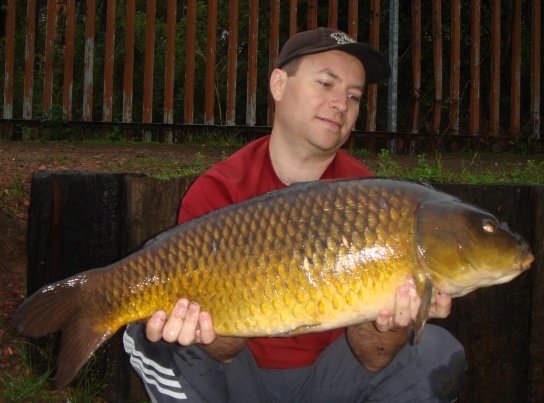How The Weather's Air Pressure Affects Carp Behaviour:
Considering Water Temperature, Air Pressure and Oxygen Levels
UK weather patterns often change suddenly and dramatically. When it's scorching hot, even though you may see carp, they may not be feeding. If it's windy, and the skies are overcast, even though it seems like perfect fishing weather, the carp may be nowhere to be found. Especially for carp anglers, it is wise to understand how differing weather patterns affect the air pressure, water temperature, available oxygen - and the feeding behaviour of carp.
Air Pressure Affects Oxygen Levels
Carp behaviour is directly affected by the amount of oxygen available. When the water has lower levels of oxygen, the carp tend to act lazy and lethargic. They may not want to eat. It's like they lack the energy necessary for feeding.
Oxygen levels drop when air pressure is up. This most often occurs during warm spells which do not replace the oxygen that is being used up by fish, other animals, plants and microscopic organisms effectively. For that reason, it may be best to go carp fishing when the air pressure is low.
Low air pressure situations (below 1000mb) are ideal. The oxygen levels are increased in the water and the carp start to feel vibrant! Rainy, windy days oxygenate the water supply and that's when it's best to go carp fishing.
Air Pressure and Oxygen Levels Affect the Depths that Carp Swim at
Most of the time, when the air pressure is high, the carp will be swimming in the upper levels of the water. Conversely, when air pressure is low, the carp may be lower down in the water depths. For the carp angler, it would not make any sense to use bottom baits on a hot, high air pressure day.
The direction of the wind also affects where carp hang out.
In the UK, winds from the southwest bring in warm air which helps the carp feel like eating. Cold air streams from northern and eastern winds tend to do the opposite. Also, stronger winds tend to make carp feed better. This is probably due to the fact that the strength of the winds causes the water to flow faster and therefore bring in more food. That's the reason that many carp anglers prefer to fish with the wind blowing in their faces. That means that the food supply is being blown towards them - and food attracts the carp.
There's an old saying; it goes:
"When the winds come from the west, the fish bite best. When the winds come from the east, the fish bite least!"
Water temperatures affect carp feeding as well
Carp feed most prolifically when the water temperature is up to 10° C. If the temperatures drop very far beneath this level, the fish will not feed as much because they are more likely to be busy searching for warmer thermal layers in the waters. And just because there is a dramatic and sudden change in air temperature, does not mean that the water temperature is instantly affected as well. When temperatures drop outside, it will take the water a couple of days to drop to that same level. Additionally, the deeper that a given water supply is, the longer it will take air temperatures to affect water temperatures.
Remember that carp like to be warm. Larger ponds and lakes will most likely contain different thermal layers. And these thermal layers will be located based on the water's depth and the air's temperature. And on cold mornings in the winter, you will often find carp in shallow waters because the sun warms them quickly.
Always consider air pressure, oxygen content, water temperature and wind direction/strength when trying to locate those huge carp!
Locating Big Carp in the Spring
Carp Location in the Summertime
Finding Large Carp in the Cold Winter
Location of Most Carp in Autumn
The Case for Quality Carp Bait
Fishing Tactics for Snags & Trees
Boilie Placement on the Hair rig
Different types of carp rigs to use
A Carp's Digestive System in Detail
Ingredients used in Common Carp Baits
Common Baiting Tactics When Fishing
The Various Carp Bait used to Catch Bigger Carp
When to use Pop-ups or Bottom Bait for Carp Fishing
How to complete a Baiting Campaign on Lakes & Ponds
The Basic Carp Fishing Baits Used to Catch Large Carp
Fishing Tactics when Fishing for Carp during Long-stay Sessions
